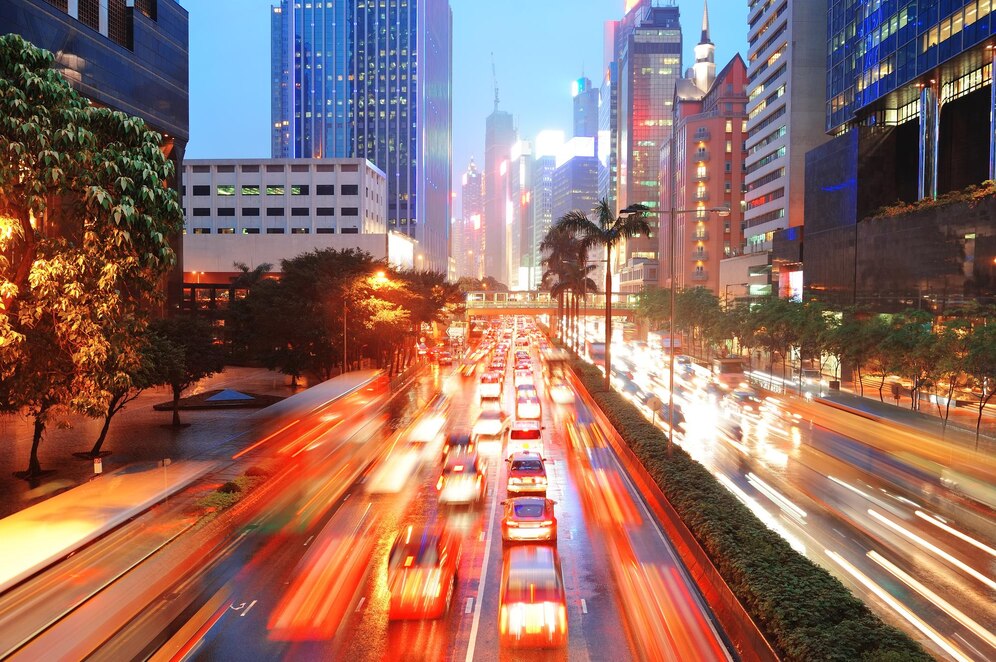
What to Expect and How to Prepare for the Incoming 2024 Holy Week Traffic
As the Holy Week approaches, residents and travelers in the Philippines brace themselves for the worst traffic congestion and traffic jams that plague major transportation hubs and thoroughfares such as NAIA, NLEX, and SLEX.
The influx of travelers to the country, not just from cities nearby and the neighboring Southeast Asia but tourists from other parts in the world during this time can cause significant delays and frustrations for those trying to navigate traffic in Metro Manila.
Understanding the traffic situation and taking necessary precautions can help minimize the impact of the traffic crisis. As we approach the 2024 Holy Week, here’s what you need to know about the expected traffic woes and how to prepare for a smoother journey.
The Role of Traffic Enforcers in Managing Traffic during Holy Week
During Holy Week, thousands of Filipinos leave the metro and embark on journeys to their hometowns, beaches, and tourist destinations. There is high demand for slots from commuters who rely on public utility vehicles, trains, and other forms of mass transportation.
This, coupled with the influx of more private vehicles on the road results to increased traffic congestions on major expressways resulting longer waiting time, and on rush hours, travel is even at snail’s pace.
The Tollways Management Corporation (TMC) predicts that traffic volume along NLEX could surge by 25,500 to 34,000 vehicles during this period. This is why the company and government agencies encourage people to know alternative bus routes even before hitting the road.
Even if government offices are closed during this season, traffic enforcers are present on their behalf and play a crucial role in managing traffic during Holy Week. Their presence on the streets helps regulate the flow of vehicles and ensures that drivers follow traffic rules and regulations.
They are responsible for offering possible solutions for better mobility, directing traffic, controlling intersections, and finding alternative routes to alleviate traffic congestion.
How to Prepare for Metro Manila Traffic during Holy Week
To avoid getting stuck in heavy traffic during Holy Week, it is important to plan your travels and consider alternative routes. Here are some tips to help you navigate the roads more efficiently:
Plan your travel dates
One simple solution is to try to avoid traveling during the rush hour when there is a higher volume of vehicles on the road. Consider traveling a day or two before or after the busiest travel days so as not to take the available road space to minimize traffic congestion.
Check the traffic situation
Stay updated on the traffic situation by checking real-time traffic updates through mobile applications or online platforms. This will help you identify areas with heavy congestion, plan alternative routes, and identify the best travel time for you.
Find alternate routes
Familiarize yourself with alternative routes before your trip. Know where the latest infrastructure development is. Use navigation apps or consult with a local traffic enforcer if you know someone to find the best routes that may help you avoid heavily congested areas. Be prepared to take detours if necessary.
Use the public transportation system
Consider using alternative modes of transportation such as the public transport system. This not only helps reduce traffic on the roads but also allows you to relax and avoid the stress of driving in heavy traffic.
Take advantage of the railway systems and train lines available in Metro Manila to reach your destination faster.
Make use of short distances
If your destination is within a reasonable walking distance, consider walking or using a bicycle instead of driving. This not only helps reduce traffic but also promotes a healthier lifestyle.
Utilize alternative modes of transportation
Another mode of transportation would be carpooling. This can help reduce the number of private vehicles on the road, consequently alleviating traffic congestion.
Additionally, utilizing bike lanes or walking for short distances can be a viable option.
Practice driver education
Be a responsible driver by following traffic rules and regulations. Avoid unnecessary lane changes, maintain proper speed, and be patient on the road. Remember that everyone is trying to get to their destination, and your patience can make a difference in reducing traffic congestion.
Familiarize yourself with traffic laws
Ensure that you are familiar with the traffic laws and regulations in the Philippines. This includes following traffic rules, obeying speed limits, and giving way to emergency vehicles.
By being a responsible driver, you contribute to a safer and smoother flow of traffic.
By following these tips and being prepared, you can make the most out of your Holy Week travel without wasting precious hours sitting in traffic.
Preparations by Tollway Operators
Prime Asset Ventures, Inc. (PAVI)
PAVI, the owner of MCX, has also made preparations for the 2024 Holy Week:
Traffic Management: PAVI collaborates with local authorities to manage traffic flow efficiently.
Increased Toll Booth Staff: Additional personnel are stationed at toll booths to facilitate smooth transactions.
Communication Campaigns: PAVI disseminates travel advisories and safety reminders to motorists.
Monitoring and Response: PAVI closely monitors traffic conditions and responds promptly to any issues on MCX.
San Miguel Corporation (SMC)
SMC, which operates SLEX and the Skyway System, has taken steps to mitigate traffic issues during Holy Week:
Increased Manpower: Additional personnel are deployed along key expressways, including SLEX, STAR, and the Skyway System. Their goal is to ensure efficient travel and safety for motorists.
Mobile Patrol Units: These units monitor traffic conditions and respond promptly to incidents.
Ambulant Tellers: At major toll plazas, ambulant tellers expedite toll collection, minimizing queues.
Government Initiatives for Traffic Management
The Philippine government has implemented various initiatives to address the traffic problem in Metro Manila.
These initiatives aim to improve traffic flow, enhance road infrastructure, and promote alternative modes of transportation. Some notable initiatives include:
Bus Rapid Transit (BRT) System
The government is working on establishing a BRT system in Metro Manila to provide efficient and reliable public transportation. BRT lanes will be dedicated to buses, reducing the number of private vehicles on the road.
Road infrastructure projects
The government is investing in road infrastructure projects to improve traffic flow. This includes the construction of new roads, bridges, and flyovers, as well as the widening of existing roads.
Strict enforcement of traffic laws
Traffic enforcers are being deployed to major thoroughfares to ensure that motorists comply with traffic rules and regulations. This helps maintain order and reduce congestion on the roads.
Promotion of bike lanes
The government is promoting the creation of bike lanes to encourage cycling as an alternative mode of transportation. This helps reduce traffic congestion and promotes a healthier lifestyle.
Conclusion
Holy Week in the Philippines brings not only religious observances but also heavy traffic. The increased private vehicle usage, limited road space, and lack of alternative routes contribute to traffic congestion in Metro Manila.
Remember to be patient and practice responsible driving to help alleviate traffic problems.
Holy Week may be a challenging time to travel, but with careful preparation, you can still enjoy a smooth and hassle-free journey.

Celebrate Life’s Milestones in Camella!
Make unforgettable memories in a Camella home.
Our communities are designed to elevate your living experience.

